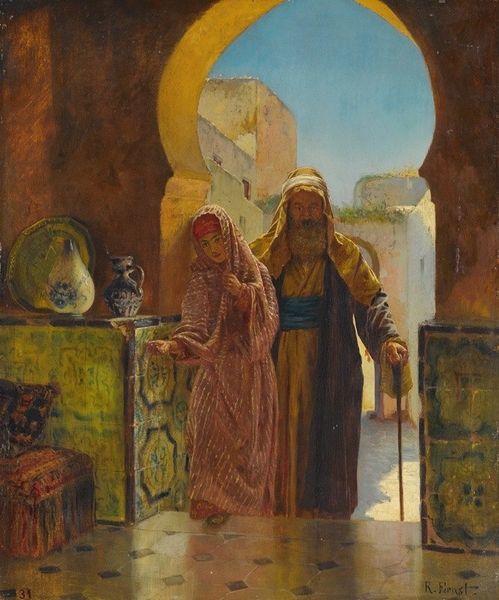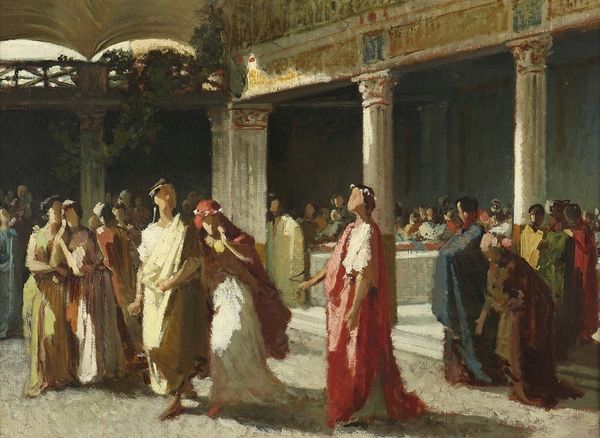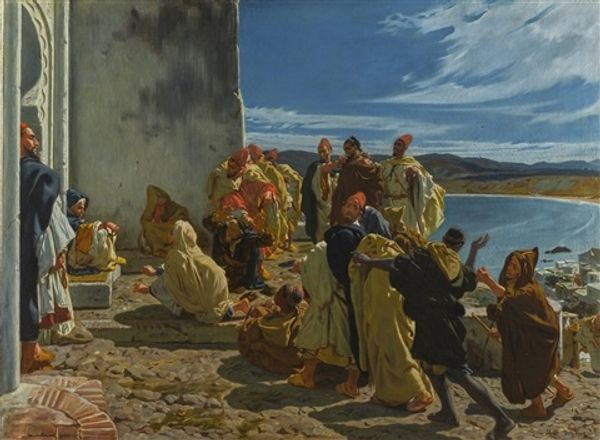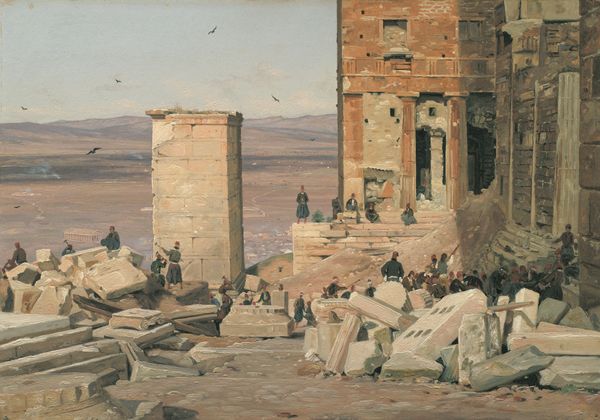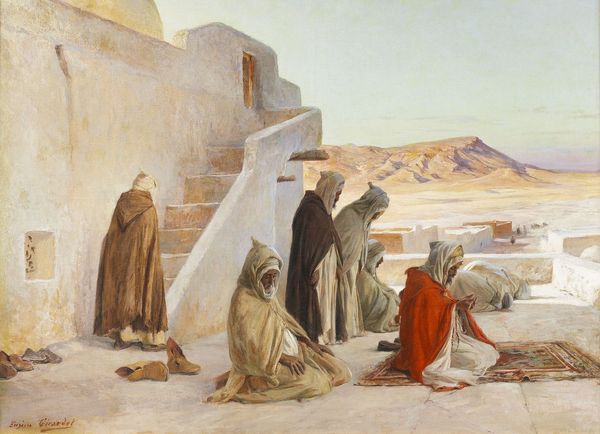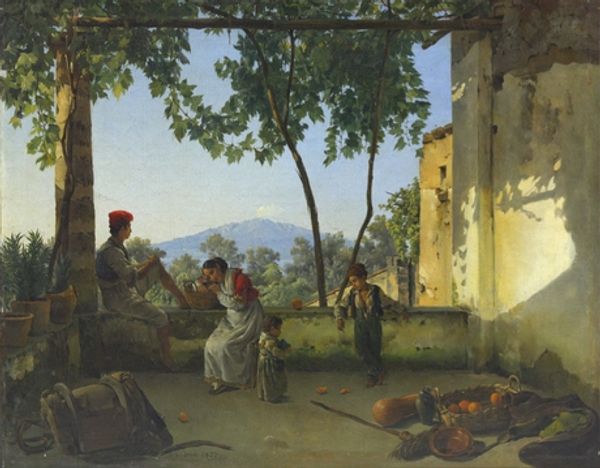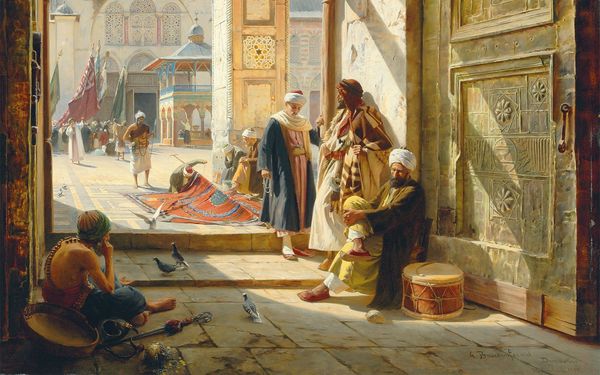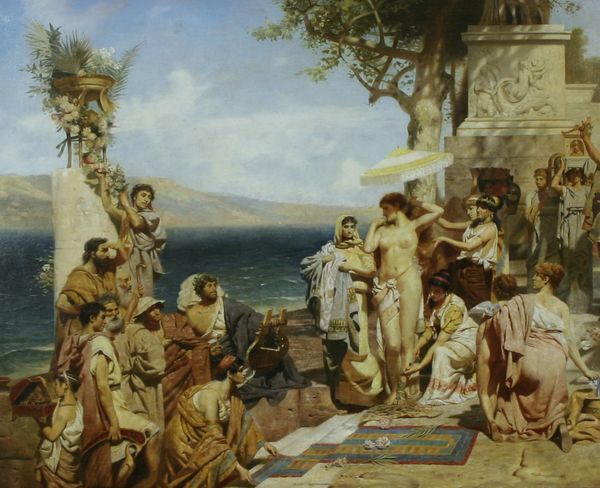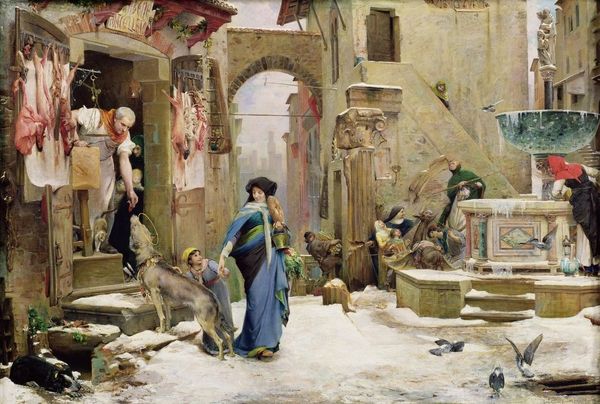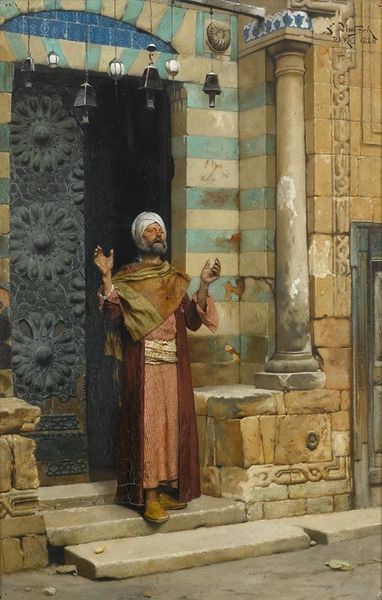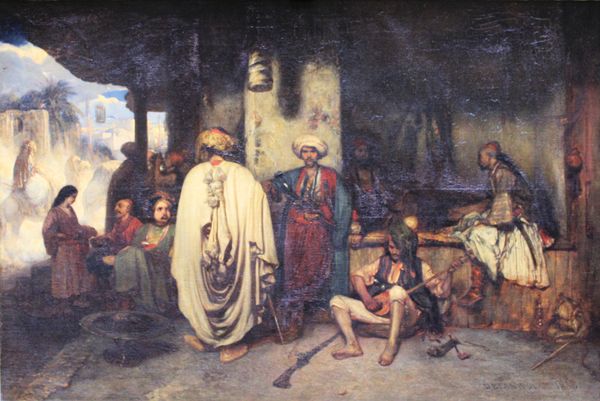
The View from the Temple of Athena on the Acropolis 1844
0:00
0:00
painting, oil-paint
#
painting
#
oil-paint
#
greek-and-roman-art
#
landscape
#
figuration
#
oil painting
#
romanticism
#
history-painting
Dimensions: 25.5 cm (height) x 33 cm (width) (Netto), 36.6 cm (height) x 44.4 cm (width) x 6.1 cm (depth) (Brutto)
Curator: Here we have Martinus Rørbye's 1844 painting, "The View from the Temple of Athena on the Acropolis," an oil painting currently residing at the SMK, Statens Museum for Kunst. Editor: Immediately, I'm struck by the composition – the fragmented columns act as a frame, focusing our gaze onto the vast landscape below. There's a quiet sense of melancholy, almost like a stage set abandoned after a performance. Curator: Precisely. Rørbye was working during a period when European artists and intellectuals were deeply engaged with the idea of ancient Greece. The Greek War of Independence had recently concluded, and there was a surge of interest in its history and ruins, and the consumption of that by an eager audience at home. Editor: Observe how the figures are positioned within the frame. Are they participants in this grand historical narrative, or mere observers? And what of their attire, does it speak to any local craftsmanship or materials? Curator: I think both interpretations are valid. Their placement acknowledges a then contemporary audience consuming this imagery, while the materials might tell us something of the then burgeoning production of textiles, and how clothing and their components where acquired at this time. The romantic sensibility often placed contemporary figures within historical landscapes to evoke feelings of awe, nostalgia, and contemplation on the passage of time. It really does speak to romanticism as an ideological consumption of space and peoples! Editor: Consider also the color palette, so restrained and almost monochromatic, composed with earth tones. It subtly evokes a timeless quality, while also calling to the crumbling stone that formed this incredible complex and civilization, the subtle variations creating a delicate tonal harmony. I also believe we cannot discard the use of figuration - these aren't mere passersby but instead, they draw the eye with their dress and subtle placements which is, surely, a commentary on society and people? Curator: That could suggest an active population rebuilding after decades of conflict. Editor: Yes! And as you pointed out, Rørbye may have also been using those same figures to remind an audience back home in Denmark, or wider Europe, of their presence - not only on a landscape level, but within the commercial context of Romanticism as a trend to explore. It allows for deeper engagements and questions. Curator: Looking at the artwork again I'm starting to agree that the figures can embody more than just 'presence', or 'population'. What an amazing work of art to get the thoughts going on labour and society as a whole, it has definitely allowed for the production, trade, and ownership, or ownership thereof, of figuration itself to grow here in my own understanding. Editor: It certainly presents the ancient and modern within the framework of early nation-state formation, both visually and, as we see, conceptually too.
Comments
statensmuseumforkunst over 1 year ago
⋮
On the back of Rørbye’s painting there is an advertisement for the manufacturer and trader of the millboard Rørbye used to paint The View from the Temple of Athena on the Acropolis. The business was owned by the English paint dealer, frame maker, and restorer Robert Davy (c. 1771-1843), who sold art supplies from his shop on Newman Street in London. Rørbye never visited London, but could have purchased the millboard on his travels in southern Europe then brought it back to Denmark, where he made the painting in 1844. The advertisement claims Davy to be the sole manufacturer of ‘genuine Flemish grounds’ on wooden panels and millboards, at the same time as promoting a new sketching block with 30 pages for sketching in oil. In the 1800s artists usually bought their art supplies from grocers and chemists, then later from specialised ‘artists’ colourmen’ like Robert Davy.
Join the conversation
Join millions of artists and users on Artera today and experience the ultimate creative platform.
